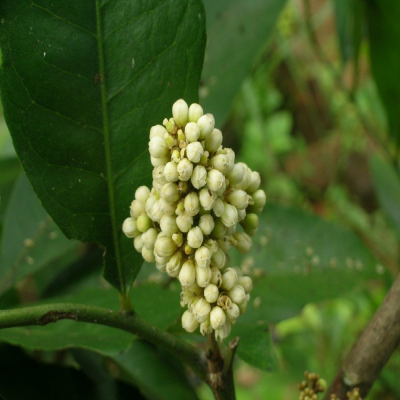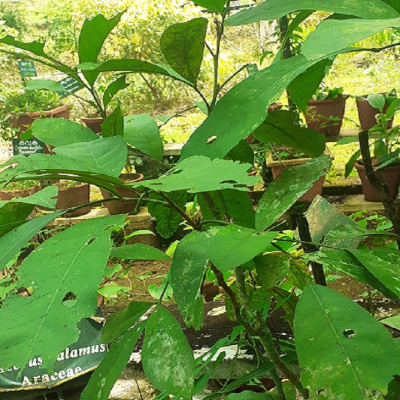Glycosmis pentaphylla (Retz.) DC.
Synonyms : G. arborea (Roxb.) DC.
Family : Rutaceae
Group : Anti-arthritic/anti-rheumatic/anti-inflammatory
Parts Used : Root , Leaf , Whole plant
Vernacular Names :-
| English | : | Tooth brush plant |
| Malayalam | : | Kuttippanal |
| Hindi | : | Girgiti |
| Sanskrit | : | Asvasakhothah |
| Bengali | : | Ash shaorah |
| Kannada | : | Kasarkana |
| Tamil | : | Kattukonci |
| Telungu | : | Gongi |
Distribution and Habitat: Found throughout India
Botany: Aromatic shrub attaining 0.5-1.5 m in height.
- Leaves: Alternate, imparipinnate, variable from 1-5 foliate, leaflets ovate or obovate, dark green, glossy, polymorphous, gland-dotted, usually entire, may be minutely crenate;
- Flowers: On supra-axillary stalks, white, small.
- Fruit: Berries fleshy, pinkish white when ripe. Seeds globose and depressed.
Properties: Diuretic, Spasmolytic, antimicrobial, anti-inflammatory, antirheumatic and antipyretic
Chemical constituents: flavanoids, glycosine, glycozoidal, kaempferol, arborinone, dihydroquercetin etc
Uses: It is used in snake bites, fever, anemia, jaundice, cold and intestinal worms of children, eczema, deworming, burning sensation of the body, pimples, removing foul odour in armpit and sweat, chlorosis, and bilious complaints. A decoction of the root is given against diarrhea and rheumatism
Propagation: seeds, cuttings



